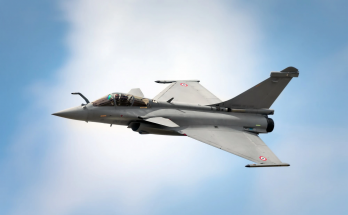The U.S. is looking into whether the Pakistani Air Force made use of American-made F-16s during an aerial skirmish with the Indian Air Force late last month, which could be a violation of agreements between Pakistan and the U.S. over use of the aircraft.
Citing the U.S. Embassy in Islamabad, Reuters reported on March 3 that the U.S. is looking into reports that a Pakistani F-16 was involved in the fighting. An embassy spokesperson told the media outlet, “We are aware of these reports and are seeking more information. We take all allegations of misuse of defense articles very seriously.”
On February 27, a Pakistani Air Force fighter jet shot down an Indian Air Force MiG-21, which crashed inside Azad Kashmir/Pakistan-occupied Kashmir. The pilot was captured but later returned to India.
Reuters noted that Pakistan has denied using F-16s against India, but the military has not declared which aircraft shot down the MiG-21. Claims have emerged that a Pakistani JF-17 shot the MiG-21 down, but the military has not commented on these. India has released a photo of a scrap of the U.S.-made AIM-120 air-to-air missile bearing the number of a contract with Pakistan as evidence that American systems were utilized in the skirmish. The Indian Air Force has not acquired the AIM-120.
Pakistan has purchased a number of F-16s from the U.S. over the years, with dozens currently in service. The aircraft come under specific “end user agreements,” Reuters reported, but the U.S. Embassy in Islamabad did not provide further clarity on the terms of the agreements covering the F-16s. The embassy said, “The U.S. Government does not comment on or confirm pending investigations of this nature.”
If the U.S. determines that Pakistan used F-16s against India in violation of previous agreements, it is not clear what steps Washington will take in response. The U.S. may consider blocking current and future arms sales to Pakistan.
While Pakistan has previously imported a number of military systems from the U.S., the bilateral relations have deteriorated significantly. In 2016, the U.S. Congress blocked the use of American military assistance funding for a new sale of eight F-16s to Pakistan – effectively killing the deal – over concerns about whether the aircraft would be deployed against India, as well as the pace of Pakistani counterterrorism action.
Furthermore, Pakistani officials have recently complained about a lack of spares support from the U.S. to maintain the fleet of F-16s currently in service.
At present, Pakistan has a dozen AH-1Z attack helicopters on order from the U.S., the first of which have already been produced. It is not clear whether any of those helicopters have been delivered to Pakistan yet, and the deal may well have been frozen before the latest incident. Pakistan also will need U.S. approval to purchase the T-129 attack helicopter from Turkey as, in its present configuration, the helicopter utilizes two LHTEC T800-4A turboshaft engines. Those engines are a product of a joint venture between U.S. firm Honeywell International and U.K. firm Rolls-Royce, giving the U.S. a veto over their export.
Besides these systems, however, arms sales from the U.S. to Pakistan have largely tapered off already. Other means to pressure Islamabad – such as with sanctions – could inhibit American objectives in nearby Afghanistan, where Washington is seeking Islamabad’s support to achieve a political solution between the government and Taliban insurgents.
Military markets analyst, covering Eurasia, Middle East, and Africa.




